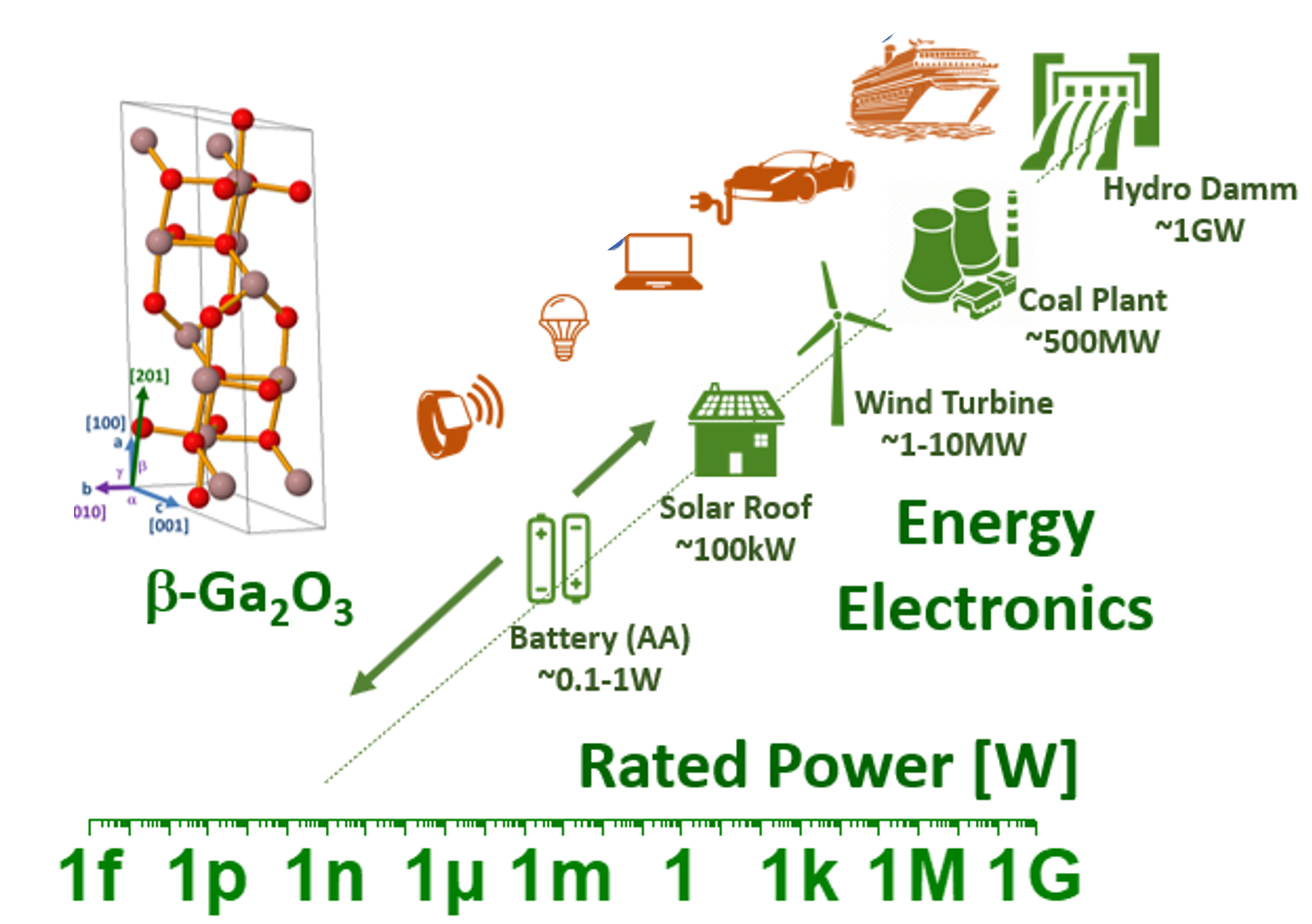You are here : GEMACENHighlights
- Partager cette page :
- PDF version
Gallium oxide pushes the limits of silicon for power electronics
Editor’s Choice and one of the most downloaded papers of the ‘Materials’ (MDPI) journal in the first five months of the year, this review discusses the application of ultra-wide bandgap semiconductors in power electronic devices, focusing in particular on gallium oxide.
An optimal management of electric energy requires efficiency at each stage of the process, from production to final use, with minimum loss along the way. Power electronic devices play an important role in this chain, since they are designed to deal with high power and withstand elevated operating temperatures. Even though silicon is still the golden standard for consumer electronics, other materials that are more energy efficient are used for high power applications. In particular, semiconductors having a band-gap wider than silicon –such as silicon carbide and gallium nitride– have been adopted in the latest decades, thanks to their superior performance.
In recent years, research groups and companies working in power electronics have been studying a new family of materials, called ultra-wide bandgap (UWBG) semiconductors, which are expected to be able to handle even higher power rating and temperatures of operation. Among them, gallium oxide (Ga2O3) is receiving a lot of attention due to its peculiar characteristics. Its conductivity can be modulated in order to obtain devices with higher breakdown voltage and unique optoelectronic properties. In addition, large single-crystal layers of this material can be built with low-cost and scalable production techniques. Power devices based on Ga2O3 are expected to work at higher voltages, temperatures, and switching frequencies with greater efficiency. This results into less losses and decreased cooling requirements (which also means that electronic devices and systems can be more compact, and thus save space and reduce the overall cost). These savings, in turn, will have indeed a direct impact on the energy consumption of power electronic systems (such as renewable and transportation), mitigating their associated emissions and CO2 footprint.
A review paper in Materials—authored by GEMaC members, members of the College of Engineering of Swansea University (UK), and by Dr Amador Pérez-Tomás (corresponding author), senior researcher in the ICN2 Advanced Electronic Materials and Devices Group— discusses the advantages of UWBG semiconductors for application in power electronics and the state-of-the-art of research in this field. Gallium oxide (Ga2O3), currently the prominent material of the UWBG family, is covered in detail. In conclusion, the authors give a brief overview of other emerging oxide semiconductors for power applications. This review was included in the ‘Editor’s choice’ section of Materials and in the list of its top downloaded papers of the first five months of 2022.
This ongoing pan-European research was funded by the French National Research Agency ANR, through the project GOPOWER (‘Accelerating the demonstration of Gallium Oxide’s outstanding potential for Energy application’, Project-ANR-21-CE50-0015).

Figure:Ga2O3, a promising material for power electronics.
Related link:
Z. Chi, J.J. Asher, M.R. Jennings, E. Chikoidze, A. Pérez-Tomás,
"Ga2O3 and Related Ultra-Wide Bandgap Power Semiconductor Oxides: New Energy Electronics Solutions for CO2 Emission Mitigation",
Materials 15, 1164 (2022) – [HAL].
Contact :
Ekaterina Chikoidze





